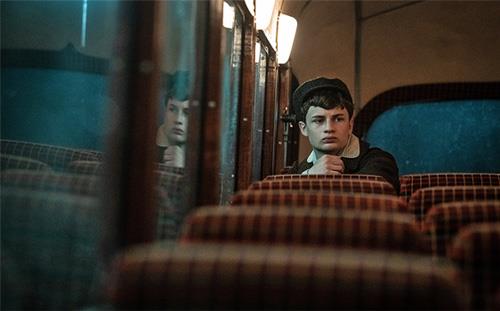
The Windermere Children is a Holocaust story with as happy an ending as any Holocaust story can have.
The Windermere Children, which airs at 10 p.m. ET Sunday on PBS (check local listings), dramatizes the real-life story of Jewish orphans who were brought to England soon after they had been liberated from World War II Nazi concentration camps.
Some 300 children, selected because they had no known surviving parents or relatives who could shelter them, were transported to a former war production plant in the British Lake District for several months of what was, in the gentlest and broadest sense, rehabilitation.
The counselors and specialists at this project are portrayed as passionate, caring, sympathetic, and often overwhelmed because the scale of the trauma these children had suffered was almost unthinkable.
One child's entrance interview included his declaration that he had survived because he was strong enough to take food from fellow prisoners who were too weak to defend it.
The first night that all the children are assembled in the dining hall for a meal, baskets of bread are placed on the table. When the prayer has been said, and it is time to start eating, all the children grab as much bread as possible and run back to their rooms to stash it away.
Equally ominous and equally telling, each of the children is given new clothing. The ragged clothes in which they arrived are confiscated and thrown in a pile to be incinerated in a bonfire. That's a scene that reminds some children of the camps themselves. And not the only scene.
The children, obviously only a small fraction of those found in the camps, range in age from maybe 5 or 6 up to high school age.
The goal, as explained by director Oscar Friedmann (Thomas Kretschmann), is to help ease them back into a normal world while providing them with some of the tools necessary to function in that world.
That includes teaching them English, which none of them speaks, and engaging them in "normal" activities like football and art.
Football coach Jock Lawrence (Iain Glen) and art teacher Marie Paneth (Romola Garai), who, like the other adults playing supporting roles here, represent two different philosophies on how to best help the children.
Lawrence often opts for tough love, warning that when they leave Windermere, they will get no special consideration because of their suffering. Paneth suggests that many of the children cannot and may not ever be able to speak of the horrors they witnessed, but that it is possible through their drawings to see what images are deeply etched into their minds.
The children are portrayed in something of the same way, by sketches rather than documentary portrayals. We see halting signs of young romance, teenage-boy bravado, and conversations that often circle the outer perimeter of what they have all experienced.
Because no production can tell 300 stories, this one focuses on five or six, while acknowledging their situations are, in many ways, universal at Windermere.
Everyone, for instance, is acutely aware every day that the Red Cross is compiling a comprehensive listing of every survivor from the various camps.
While these children are too realistic to expect miracles, everyone naturally holds out a sliver of hope that some family members, long ago sent to a different camp, somehow survived.
The day the Red Cross truck arrives with reports for each child is not a good one.
In general, though, Windermere seems to accomplish a good part of its ambitious goal. It doesn't erase all the night terrors or make the residents back in these children's native Eastern European villages any more accommodating, but it seems to slowly convince most of the children that there is still a world in which they can be valued, not hunted.
Only at the end does The Windermere Children take an overt documentary turn, bringing some of the real-life Windermere children back to the lake many years later to tell us about the rest of their lives.
It would be interesting to get an overview of all the children – how many went back to Europe, how their lives unfolded – but the sample here suggests the better side of humanity won some satisfying victories.